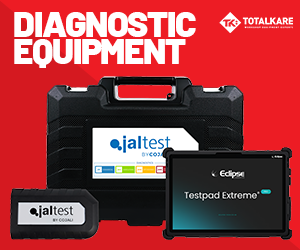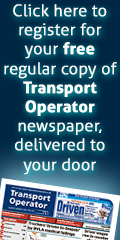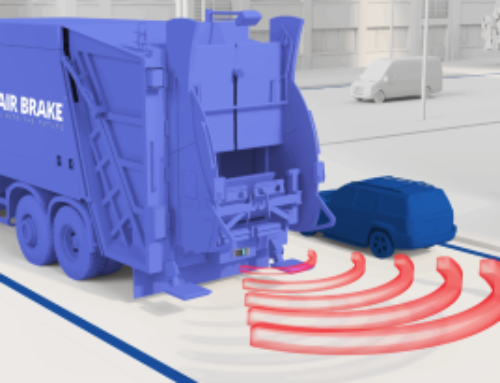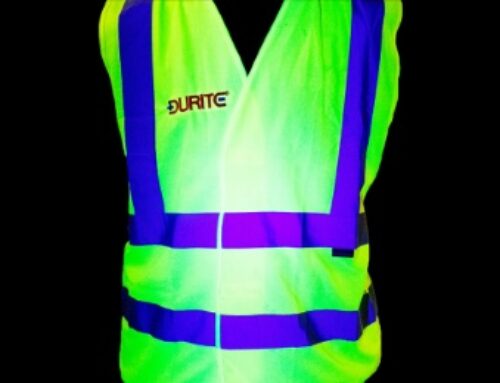RAM Tracking: driving business benefits with telematics
![]() RAM Tracking has outlined its perspective on how telematics and HGV tracking technology can save operators money while enhancing customer service.
RAM Tracking has outlined its perspective on how telematics and HGV tracking technology can save operators money while enhancing customer service.
“It’s a constant balancing act when margins are tight, and customers demand the highest level of service,” said Nick McClellan, CEO of RAM Tracking.
“With compliance to consider as well with driver hours, daily vehicle checks and the like, running a business in this sector is no mean feat. Competition is fierce, so to minimise costs whilst steering the ship to calm waters… there has never been a better time to embrace telematics a take advantage in the race to futureproofing success.”
When it comes to fixed costs, says Nick, the best place to start is on the quick wins and largest spends.
“Fuel is one of the biggest expenses for any fleet-based business,” he said.
“Telematics systems help monitor fuel usage and identify inefficient driving behaviours such as idling, rapid acceleration, or harsh braking. By reducing these behaviours, companies can lower fuel consumption and save significant costs.
“Real-time feedback to drivers can encourage better habits, leading to long-term savings. RAM has gamified this to create a drivers league table report showing the best and worst offenders to quickly address bad habits. The results? Expect 15-20 per cent fuel efficiencies.”
Frequent breakdowns or unexpected repairs can be a major cost burden, Nick observes.
“Telematics systems track vehicle diagnostics, providing alerts when maintenance is needed, such as engine issues or tyre wear. Predictive maintenance ensures vehicles are repaired before small problems become costly failures, reducing downtime and repair expenses.”
Daily vehicle check requirements for heavier commercial vehicles also means having a system in place to store these, says Nick, and also primes maintenance teams for repair scheduling, minimising disruption to vehicles’ road time.
RAM’s Assist App for drivers does exactly this, sending notifications of failed checks, and is customisable to include whatever specialist adaptations vehicles might have.
“Results can be seen with an increase of eight to ten per cent more drive time in vehicles,” he added.
He also highlighted telematics’ capacity to improve route planning and enhance driver productivity.
“HGV tracking systems provide real-time traffic data, road conditions, and the best routes for delivery. By optimising routes, businesses can reduce fuel consumption, improve delivery times, and lower maintenance costs (by avoiding unnecessary wear and tear). This also reduces the chances of late deliveries, which can result in financial penalties or lost business…
“Telematics systems can track driving hours, routes, and overall efficiency. By optimising drivers’ routes and reducing delays, businesses can improve overall fleet productivity. Enhanced productivity means more deliveries in less time, driving revenue growth while reducing operating costs.
“Utilising RAM’s route replay (one of our most popular reports) can show how easy it is to see bottlenecks and consistent traffic pain points to reevaluate timings which can save precious hours in drivers’ days. Both route planning and driver productivity will improve.”
Any urgent jobs that come in means that the nearest available drivers can be rerouted too, he added.
A further benefit is assistance with regulatory compliance and reduced fines.
“Telematics systems can automatically record and report on driving hours, vehicle speed, and other regulatory metrics, ensuring that businesses comply with laws to avoid hefty fines,” said Nick.
He continued: “Companies that adopt telematics often qualify for lower insurance premiums, as they can demonstrate a commitment to safer driving practices and reduced accident rates. RAM’s commitment to saving money for businesses also means you can take advantage of discounted rates with fleet insurance providers too.”
A key customer service benefit is the capability to offer customers real-time, accurate delivery updates, Nick contends.
“This improves customer satisfaction and builds trust in the service. Geofencing within the mapping interface means we can send notifications when vehicles enter a specific customer’s delivery zone notifying the time of entry and exit.
“We use the same technology if a vehicle enters a congestion or CAZ to let you know if a toll or charge needs to be paid or records against Emovis Tag payments. LiveShare allows customers to see where their drivers and deliveries are from an ETA perspective.”
In a highly competitive logistics market, being able to offer faster and more reliable deliveries also gives businesses a distinct edge.
“With telematics, businesses can monitor fleet performance and make real-time decisions that improve delivery times. Whether it’s rerouting a vehicle to avoid traffic or providing precise delivery times, technology helps companies meet and exceed customer expectations.”
Nick additionally highlights how safer driving behaviours, encouraged by telematics, can reduce accidents and ensure driver safety.
“For businesses, a safer fleet means fewer claims, fewer injuries, and less downtime due to accidents. Moreover, drivers who feel supported by the technology in their vehicles (for example, through driver safety alerts or route optimisation) are more likely to be satisfied with their job, reducing turnover and training costs.
“RAM’s drivers app also comes with support should the workforce get into an incident giving instant notification to fleet managers for them to deal with the situation quickly.”
When a problem arises during a delivery, such as a delay or vehicle issue, telematics gives businesses the ability to address the issue quickly, he adds.
“Fleet managers can take immediate action, such as rerouting drivers or alerting customers of potential delays before they even notice. This proactive customer service enhances the business’s reputation and loyalty.”












